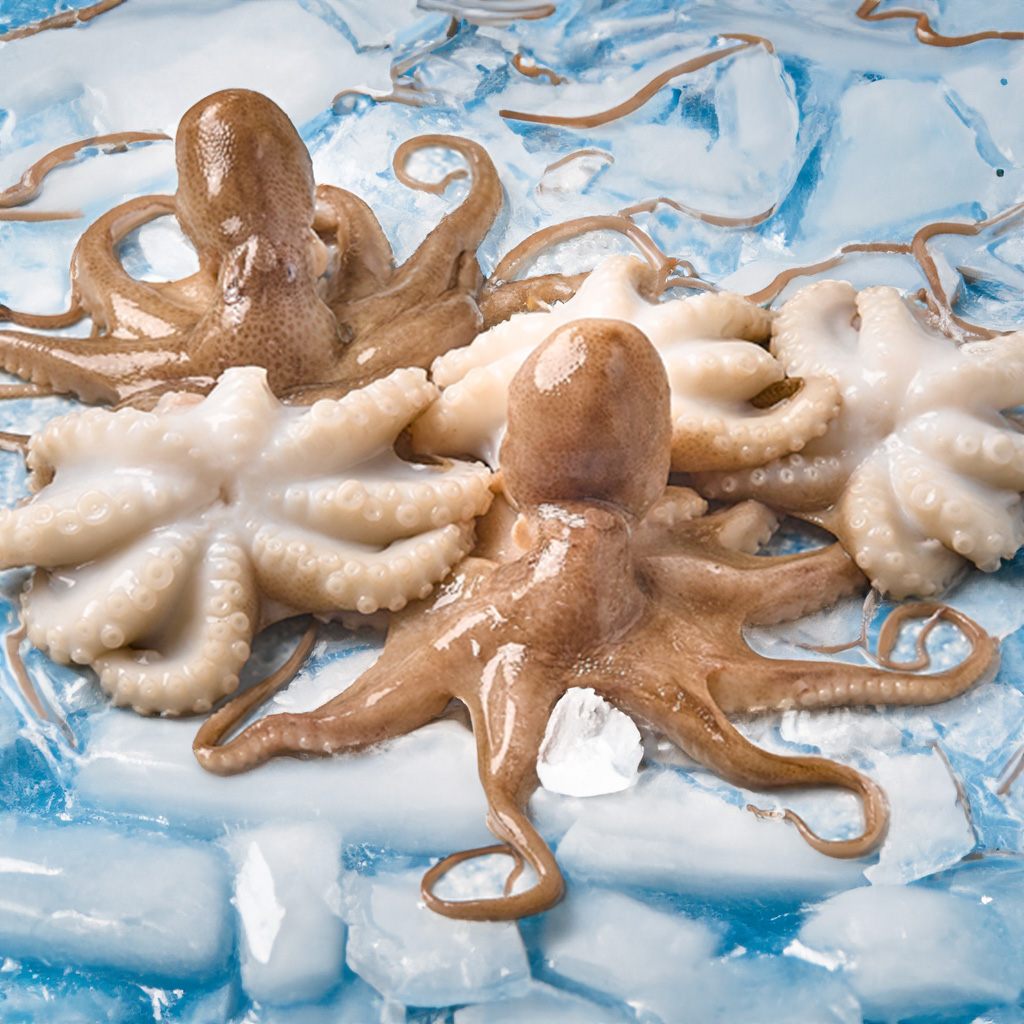Stamp: Octopus (Octopoda sp.) - Overprinted (Barbuda 2000)
Octopus (Octopoda sp.) - Overprinted (Barbuda 2000)
16 June (Barbuda ) within release International Year of the Ocean goes into circulation Stamp Octopus (Octopoda sp.) - Overprinted face value 40 East Caribbean cent
| Stamp Octopus (Octopoda sp.) - Overprinted in catalogues | |
|---|---|
| Stanley Gibbons: | Sg: BX 2250 |
Stamp is square format.
Stamp from Antigua & Barbuda overprinted "BARBUDA MAIL" in black.Also in the issue International Year of the Ocean:
- Mini Sheet - 20,000 Leagues Under the Sea - Overprinted face value 25*40;
- Stamp - Atlantic Barracuda (Sphyraena sp.) - Overprinted face value 40;
- Stamp - Black Tip Shark - Overprinted face value 40;
- Stamp - Black-cap Gramma and Blue Tang - Overprinted face value 75;
- Stamp - Blue Shark and Stingray - Overprinted face value 75;
- Stamp - Captain Nemo - Overprinted face value 40;
- Stamp - Clown Fish - Overprinted face value 40;
- Stamp - Cocoi Heron (Ardea cocoi) - Overprinted face value 75;
- Stamp - Common Tern (Sterna hirundo) - Overprinted face value 75;
- Stamp - Divers - Overprinted face value 40;
- Stamp - Emperor Angelfish - Overprinted face value 40;
- Stamp - Emperor Nautilus (Nautilus pompilius) - Overprinted face value 40;
- Stamp - Fiddler Stingray (Trygonorhina fasciata) - Overprinted face value 6;
- Stamp - Goatfish and Cat Shark - Overprinted face value 75;
- Stamp - Green Moray Eel (Gymnothorax funebris) - Overprinted face value 40;
- Stamp - Hammerhead Shark - Overprinted face value 40;
- Stamp - Hawksbill Turtle - Overprinted face value 40;
- Stamp - Humpback Whale (Megaptera novaeangliae) - Overprinted face value 6;
- Stamp - Jellyfish - Overprinted face value 40;
- Stamp - Lionfish - Overprinted face value 40;
- Stamp - Long Nosed Butterflyfish - Overprinted face value 40;
- Stamp - Majestic Snapper - Overprinted face value 75;
- Stamp - Manta Ray (Mobula sp.) - Overprinted face value 40;
- Stamp - Maroon-tailed Conure (Pyrrhura melanura souancei) - Optd face value 75;
- Stamp - Nassau Grouper - Overprinted face value 75;
- Stamp - Octopus (Octopoda sp.) - Overprinted face value 40;
- Stamp - Porkfish - Overprinted face value 40;
- Stamp - Queen Angelfish (Holacanthus ciliaris) - Overprinted face value 40;
- Stamp - Racoon Butterflyfish - Overprinted face value 40;
- Stamp - Rainbow Lorikeet (Trichoglossus haematodus) - Overprinted face value 75;
- Stamp - Regal Angelfish - Overprinted face value 40;
- Stamp - Saddleback Butterflyfish - Overprinted face value 75;
Stamp Octopus (Octopoda sp.) - Overprinted it reflects the thematic directions:
Animals are multicellular, eukaryotic organisms of the kingdom Animalia (also called Metazoa). All animals are motile, meaning they can move spontaneously and independently, at some point in their lives. Their body plan eventually becomes fixed as they develop, although some undergo a process of metamorphosis later on in their lives. All animals are heterotrophs: they must ingest other organisms or their products for sustenance.
An octopus The order consists of some 300 species and is grouped within the class Cephalopoda with squids, cuttlefish, and nautiloids. Like other cephalopods, an octopus is bilaterally symmetric with two eyes and a beaked mouth at the centre point of the eight limbs. The soft body can radically alter its shape, enabling octopuses to squeeze through small gaps. They trail their eight appendages behind them as they swim. The siphon is used both for respiration and for locomotion, by expelling a jet of water. Octopuses have a complex nervous system and excellent sight, and are among the most intelligent and behaviourally diverse of all invertebrates.
Marine life, or sea life or ocean life, refers to the plants, animals and other organisms that live in the salt water of the sea or ocean, or the brackish water of coastal estuaries. At a fundamental level, marine life helps determine the very nature of our planet. Marine organisms produce much of the oxygen we breathe. Shorelines are in part shaped and protected by marine life, and some marine organisms even help create new land. Altogether there are 230,000 documented marine species, including over 16,000 species of fish, and it has been estimated that nearly two million marine species are yet to be documented. Marine species range in size from the microscopic, including plankton and phytoplankton which can be as small as 0.02 micrometres, to huge cetaceans (whales, dolphins and porpoises) which in the case of the blue whale reach up to 33 metres (109 feet) in length, being the largest known animal.


